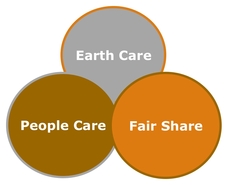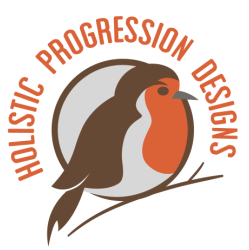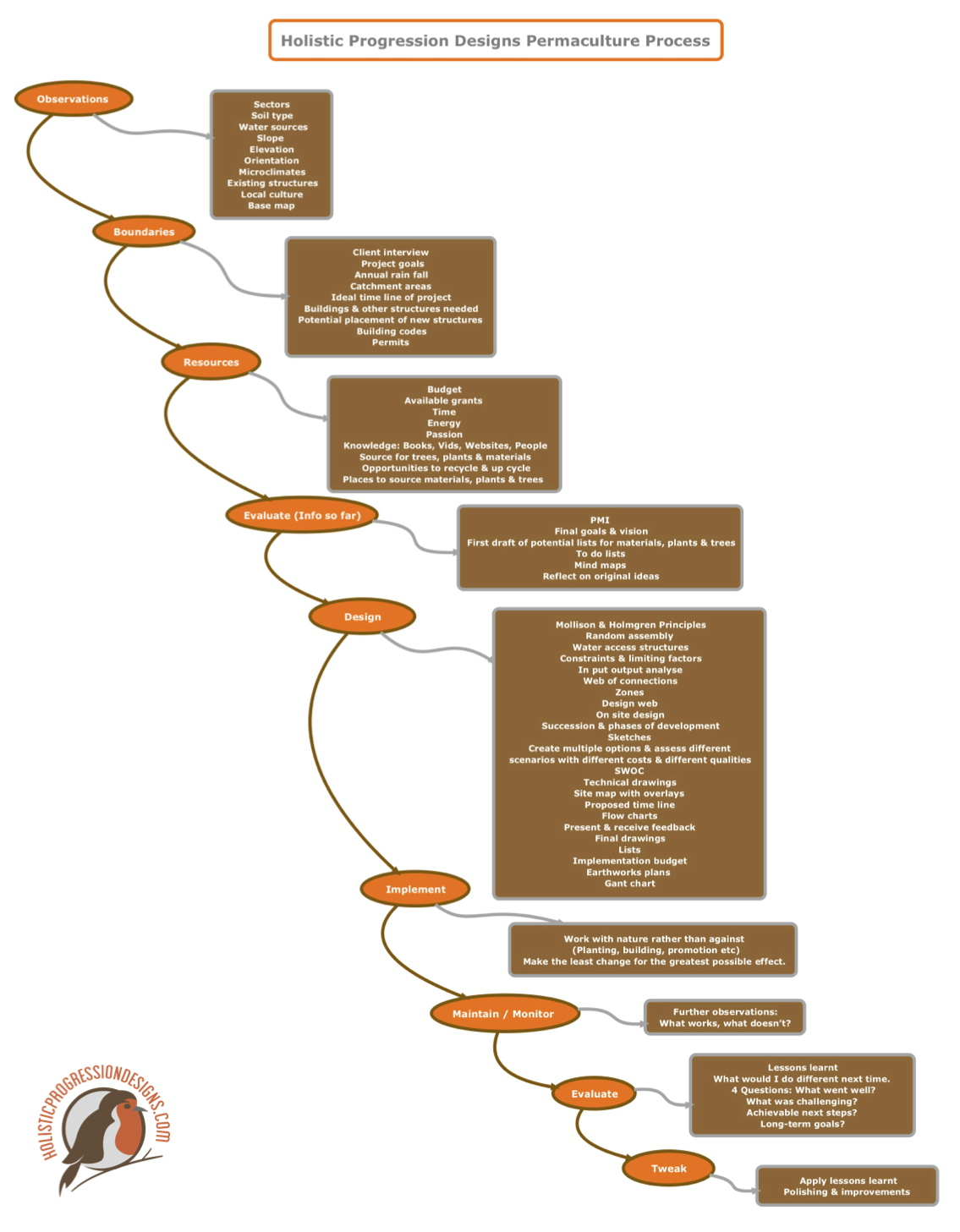
Is it a life style or philosophy?
How is a Permaculture design created?
Is it a way of growing vegetables? Do you have to have land to practice it?
What exactly is Permaculture?
I have been hearing these and other similar questions pop up more than ever as Permaculture gains momentum.
I have observed an increased interest as more people become intrigued by the concept of Permaculture as part of an exploration seeking realistic alternatives as a response to the concoction of challenges we face as a global collective.
After asking the question What is Permaculture? for the last nine years my experience is that almost everybody will give a different answer. In this blog post I will answer the questions above and share my own definition.
How is a Permaculture design created?
Is it a way of growing vegetables? Do you have to have land to practice it?
What exactly is Permaculture?
I have been hearing these and other similar questions pop up more than ever as Permaculture gains momentum.
I have observed an increased interest as more people become intrigued by the concept of Permaculture as part of an exploration seeking realistic alternatives as a response to the concoction of challenges we face as a global collective.
After asking the question What is Permaculture? for the last nine years my experience is that almost everybody will give a different answer. In this blog post I will answer the questions above and share my own definition.
Ethics and Definition
Permaculture was born in 1978 when the term was coined by the founders Bill Mollison and David Holmgren.
There are 3 simple ethics:
1. Earth Care
2. People care
3. Fair share - Distribution of surplus back to the first two ethics.
Mollison defines it as "Permaculture is the study of the design of those sustainable or enduring systems that support human society, both agricultural and intellectual, traditional and scientific, architectural, financial and legal. It is the study of integrated systems for the purpose of better design and application of such systems"
My Process
Over the last nine years I have explored and refined my Permaculture practice working with a diverse range of people in many different contexts around the world. I completed a diploma with the British Permaculture association, managed and lived at Permaculture demonstration sites, taught and attended courses and started a consultation company. After reflection and evaluation of my experiences and learning I developed my design process.
I am standing on the shoulders of great pioneers, pulling together the principles and tools from Mollison, Holmgren and others into a holistic design process. A straightforward diagram with plenty to unpack, that I can easily adjust to the context. It will vary from case to case depending on where I am, the scale of the job, what’s appropriate and who I am working with.
Permaculture was born in 1978 when the term was coined by the founders Bill Mollison and David Holmgren.
There are 3 simple ethics:
1. Earth Care
2. People care
3. Fair share - Distribution of surplus back to the first two ethics.
Mollison defines it as "Permaculture is the study of the design of those sustainable or enduring systems that support human society, both agricultural and intellectual, traditional and scientific, architectural, financial and legal. It is the study of integrated systems for the purpose of better design and application of such systems"
My Process
Over the last nine years I have explored and refined my Permaculture practice working with a diverse range of people in many different contexts around the world. I completed a diploma with the British Permaculture association, managed and lived at Permaculture demonstration sites, taught and attended courses and started a consultation company. After reflection and evaluation of my experiences and learning I developed my design process.
I am standing on the shoulders of great pioneers, pulling together the principles and tools from Mollison, Holmgren and others into a holistic design process. A straightforward diagram with plenty to unpack, that I can easily adjust to the context. It will vary from case to case depending on where I am, the scale of the job, what’s appropriate and who I am working with.
The big word is design, that’s the key. For me Permaculture is about design that leads to realistic, empowering and dynamic solutions. Permaculture draws from many different practices and sciences. In many cases of land-based Permaculture design the best and most appropriate organic agriculture practices will be used. Organic techniques can be plugged into a Permaculture design, but alone are just techniques. In essence, Permaculture is the three ethics, a clear, conscious, thought out design process and principles supported with tools for each stage.
Mollison and Holmgren Principles
Mollison provided a set of principles, the philosophy behind Permaculture in his 1988 book Permaculture, a Designers Manual.
> Work with nature rather than against.
> The problem is the solution.
> Make the least change for the greatest possible effect.
> The yield of a system is theoretically unlimited (or only limited by the imagination and information of the designer).
> Everything gardens (or modifies its environment).
As did David Holmgren in his 2002 book Permaculture: Principles and Pathways Beyond Sustainability, and with his Permaculture spiral, which brilliantly brings together these key aspects (both captured in these 1 page pdfs).
|
| ||||
The future of Permaculture
I believe Permaculture design can provide a significant contribution to solving the environmental, political, social and economic challenges we all face. Permaculture designs towards abundance, using principles as a guide to mimic the strength and diversity of nature. Permaculture can be applied at all levels and it has the power to help people in their daily choices. It can be applied to small scale projects such as: designing a home-office, a back garden, an allotment or a balcony. Permaculture brings also wonderful results when applied to larger scale projects like farms, schools, houses, communities and businesses. At a more systemic level, Permaculture can be used to redesign health and education systems, councils and governments.
Permaculture draws from traditional and indigenous knowledge as well as modern and appropriate technologies, bringing together the best of the past and present. It is applied common sense and this is why, in my view, it is so relevant; now more than ever.
Matt Prosser 04.12.2015
I believe Permaculture design can provide a significant contribution to solving the environmental, political, social and economic challenges we all face. Permaculture designs towards abundance, using principles as a guide to mimic the strength and diversity of nature. Permaculture can be applied at all levels and it has the power to help people in their daily choices. It can be applied to small scale projects such as: designing a home-office, a back garden, an allotment or a balcony. Permaculture brings also wonderful results when applied to larger scale projects like farms, schools, houses, communities and businesses. At a more systemic level, Permaculture can be used to redesign health and education systems, councils and governments.
Permaculture draws from traditional and indigenous knowledge as well as modern and appropriate technologies, bringing together the best of the past and present. It is applied common sense and this is why, in my view, it is so relevant; now more than ever.
Matt Prosser 04.12.2015



